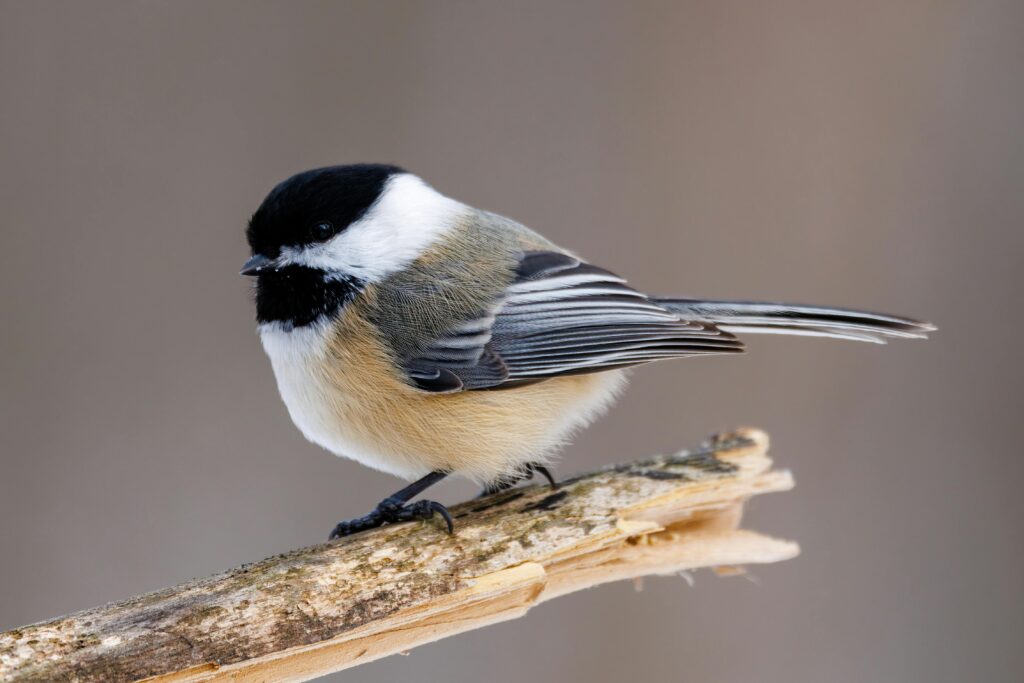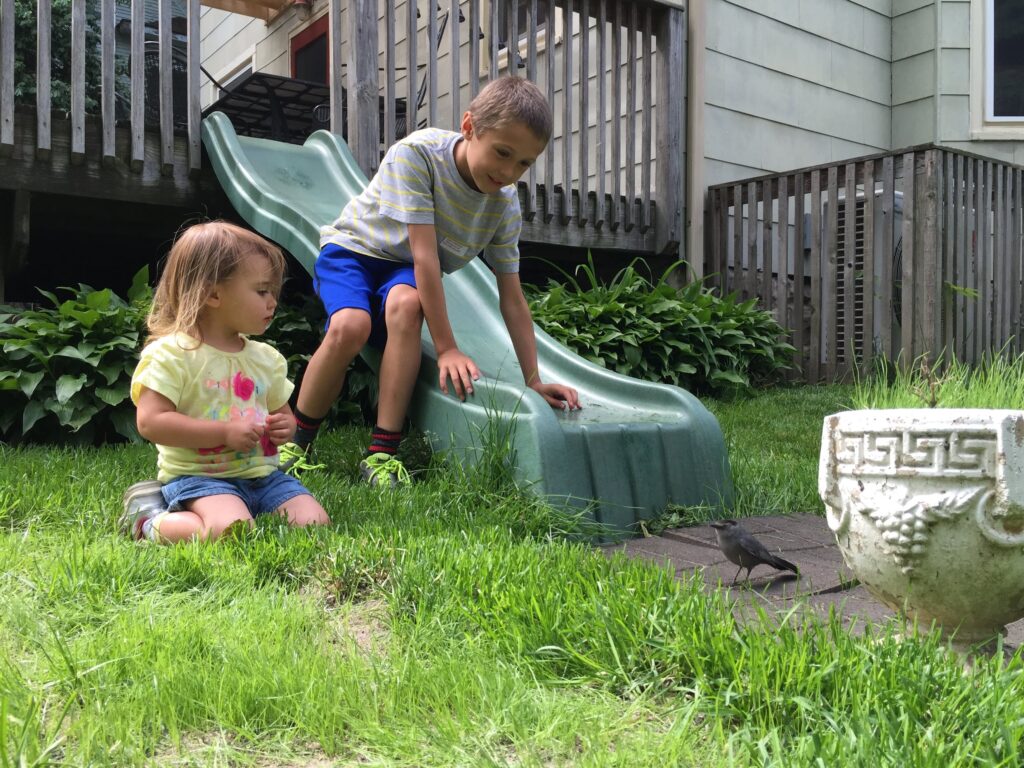“Whoo is it?” STEM Activities for Budding Birders
“Did you hear that? shouts Arden, our resident naturalist.
“I just heard an owl, and it’s not even bedtime!” he reports, his eyes as big as saucers. “He must be really hungry to be hunting this early in the day.”
“Are you sure it wasn’t our mourning doves?’ I ask. The mourning doves nest in our outdoor classroom, and we hear their calls daily.
“Listen!” Arden shushes us, holding his index finger up to his lips. “I know it was an owl! I heard it say ‘Who cooks for you? Who cooks for you, all?‘”
“What?” Michelle looks at Arden quizzically as she wanders over. “An owl says ‘Who cooks for you?’ I thought they said ‘Whoo Whoo . . . ”
Michelle’s inquiry is interrupted by a series of eight hoots. Arden pronounces each word to the syllables of the owl’s call: “Who cooks for you, who cooks for you-all?”

“It is a barred owl!” he calls out triumphantly as he races to the edge of our property. “I think it’s in those trees up the hill.”
Arden’s joy is contagious. Michelle races up the hill behind her fellow STEM explorer, eager to learn more. “How did you know the owl said, ‘Who cooks for you?’”
“My grandma taught me,” Arden responds without taking his eyes off of the branches above. “She loves birds and teaches me words that sound like a bird’s call. Grandma said it’s a trick she uses to remember bird calls and to know what bird is nearby. Like that owl.”
This exercise of identifying birds by their calls introduces our early learners to the basic principles of scientific inquiry. They learn to observe, listen and identify birds based on distinctive characteristics such as bird calls. This fosters curiosity and critical thinking and lays the groundwork for more advanced scientific study later on.
Michelle is fascinated by this newfound trick known as mnemonic bird phrases. In the case of bird calls, mnemonics (the M is silent) are often catchy phrases that help you string together the syllables and notes of a bird’s song so that you can remember its rhythm, pitch and tempo.
“What other bird-call words do you know?” asks Michelle, hungry for more clues about bird identification.
“Well, there are lots of birds out here,” says Arden. “Do you hear that one?” He points at a robin hopping around in the grass.
“That’s a robin,” he informs Michelle. “My grandma taught me to think of a robin eating a Cheerio because it sounds like, “Cheery up, cheerio, cheery up, cheerio,” and you can see if it looks like a robin by using this clue: ‘Orange belly bright, hopping in sunlight.’ You know how we always see robins in the grass, hopping around looking for worms?”
Arden is still fixated on finding the barred owl when Michelle mistakes the call of the mourning doves for the owl.
“I hear it!” she shouts, jumping up and down and pointing at a nearby fence.
“That’s not the owl,” says Arden. “It’s the doves, who say, ‘Coo-OOO, coo, coo, coo.’ It sounds really sad, and there are only four calls. The owl has more and says, ‘Who cooks for you, who cooks for you-all?'”
After comparing the two calls for Michelle and the others, Arden does his best barred-owl call and then points at the hill. “When you hear a birdcall from up there, it will be the owl. Let’s wait and listen.”
Seconds turn into minutes as they wait quietly, listening intently until they hear a series of hoots.
Arden stiffens with excitement. “Okay, now say the words that will help you remember the call,” he coaches Michelle. “Who cooks for you, who cooks for you-all? Who cooks for you, who cooks for you-all?”
Arden and Michelle smile broadly as the owl hoots again and they repeat the call with their mnemonic phrase.

“That is so cool!” Michelle declares, twirling in delight. “I can’t wait to teach my mom! She will be so surprised! Do you know more?”
Michelle has caught the birding fever!
“Hmmm,” Arden ponders the question, then offers up another tidbit of knowledge gleaned from his grandmother.
“The chickadee says its own name: ‘Chickadee-dee-dee.’ Then she says, ‘Cheeseburger, cheeseburger.’ My grandma taught me to think of it as a chickadee eating a cheeseburger. I don’t see a chickadee around here, but there’s a picture of one in the books in our classroom.”
And off they run, side by side, their newly formed friendship leading to a deeper STEM investigation.

Early exposure to a variety of sounds—like the calls of backyard birds—helps children develop auditory discrimination—the ability to differentiate between different sounds. This skill is essential for understanding speech, identifying sounds in words, and reading readiness.
Developing strong auditory skills early on is linked to academic success later in life. It contributes to phonological awareness (the ability to recognize and manipulate sounds in language), a strong predictor of reading ability and overall academic achievement.

By integrating bird call identification into early science education, educators and caregivers can enhance sensory development, promote scientific inquiry skills, nurture a love of nature, and lay a solid foundation for later learning.
One grandmother’s passion, passed onto her grandson, has now been passed on to our preschool class, inspiring us to bring out the binoculars and bird books.
Ready to add a bit of bird investigation to your curriculum? Check out our Be the Bird, Build a Nest lesson plan for activities, resources, books, and music!
Be sure to add it to our COMMENTS section at the end of this post!
I think the kids would like to play with stuffed birds and pretend to make bird homes
Hi Megan, Thanks for reminding me that we have a great lesson on the Early Science Matters website, called Be The Bird, Build a Nest, that has suggested books, materials and songs and resources for exactly that! I will update the blog, now! Thank you, thank you!
https://earlysciencematters.org/lessons/be-the-bird-build-a-nest/
very informative
I would incorporate these into my lesson plan about weather by discussing and observing in what weather the birds come out. As a class, we can keep track of how many birds we observe outdoors and see if we can tell when they like to be out more weather it is on sunny, cloudy, or rainy days.
I would use how the bird comes out to hunt as a way to relate it to growth and change.
yay
Toddlers and I have done a project like This I side the class room using a magnifying glass to looks at birds closely.